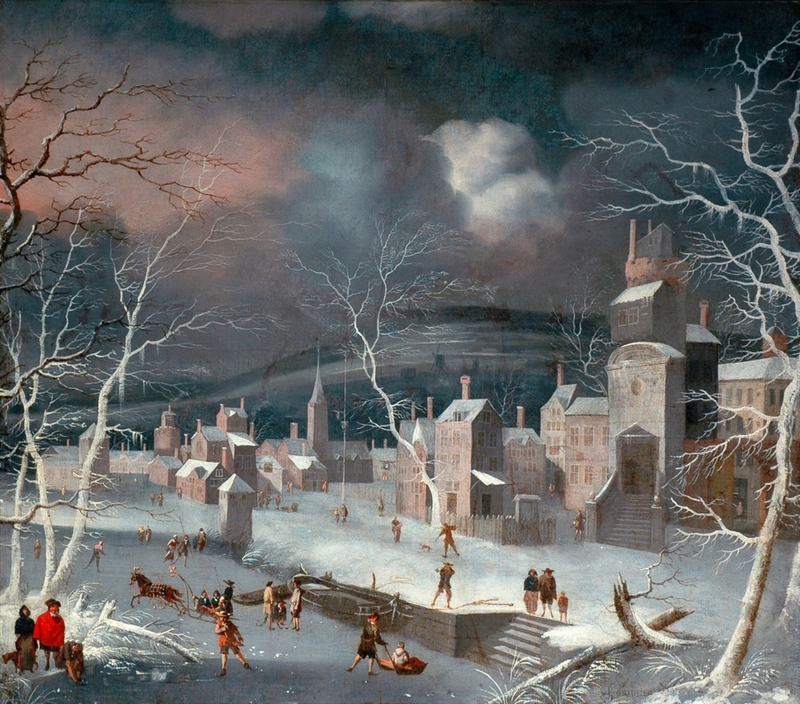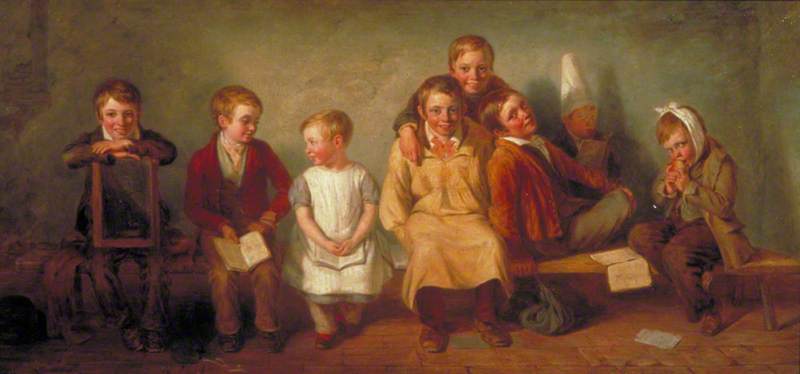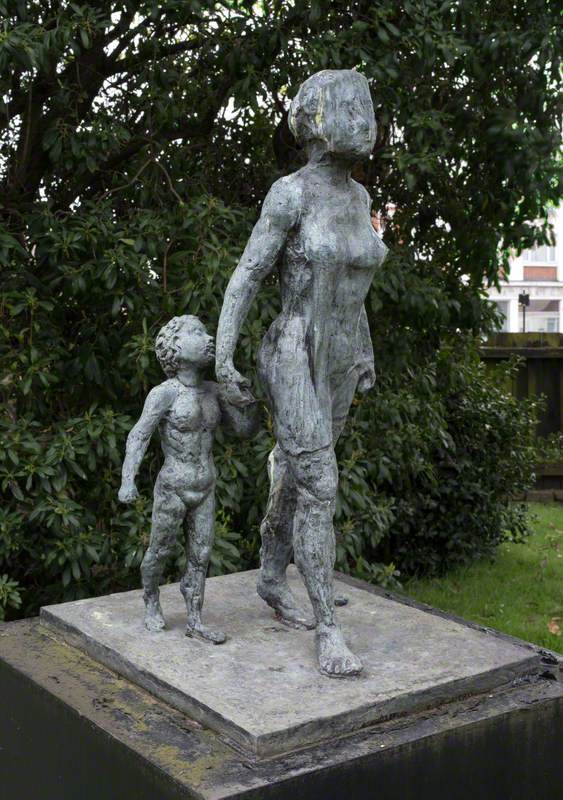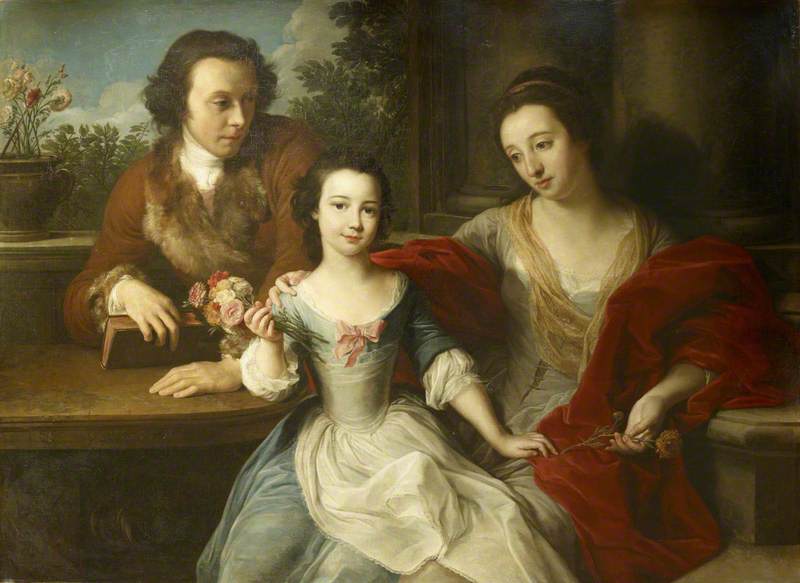This painting by an artist of the Friesland School exemplifies the centrality of the child in seventeenth-century Dutch art. From the late sixteenth century there developed a Dutch tradition of child portraiture in which the child appears, finely dressed, surrounded with toys, pets, and often holding a rinkelbel, or silver rattle.
Portrait of a Girl, Aged One, with a Basket of Strawberries
1622
Dutch (Friesland) School 
The primary aim of such a commission was to record the child’s life. Life expectancy was low, and child mortality rates were highest before the age of five. This work is the portrait of a moment, intended, most probably, to mark the child’s first birthday. This is made explicit by the inscription ‘AETATIS.SVAE.I./.ANNO.1662’ (‘in the first year of her age. 1622’). This celebration of the child’s vulnerable early life is also revealed in the more realistic depiction. The child’s fuller cheeks and rounded knuckles soften the static, iconic pose of earlier representations. This bodily portrayal captures the immediacy of childhood.
Such portraits, while focusing on the child, also express the family’s status and wealth. The young girl’s clothes, especially her red underskirt with a black ribbon motif, and lace-trimmed collar, are costly items. Silver rattles, which often appear in child portraits, were given as gifts and passed down as family heirlooms and their inclusion places the child in a broader dynastic context.
Whilst portrayed in an increasingly realistic manner, children in Dutch art often held a moral meaning. In genre paintings, such as Jan Steen’s The Dissolute Household, the thieving child embodies the inherent sinfulness of humanity. In portraits, such moral preconceptions find expression in the objects that surround the child. Emblem books, in which an object or scene was given to illustrate a moral saying, were popular in the Dutch Republic and these symbols were heavily used by artists in their work. Child portraits not only expressed family wealth, but also carried allegorical meanings through the inclusion of pets, fruits and flowers.
The upbringing of children was of central importance in this period and the Dutch translations of classical texts on education were published regularly throughout the seventeenth century. Pets often appear in child portraits as symbols of nature trained through education. The small dog in this portrait is not, however, seated and obedient, but stands on its hind legs, his paws gently paused on the child’s skirt. The dog’s eyes are fixed on the rattle, to which are attached small bells. The dog’s distraction can be read as a reminder of the dangers of the senses and the importance of a proper upbringing in controlling man’s inherent attraction for the sensual.
Flowers and fruit often symbolised the child’s blossoming and the fruits of education. Although the title of this painting claims the fruit in the basket are strawberries they are more likely to be cherries due to their visible stalks. Coral jewellery also appears frequently in child portraiture and was commonly used in the seventeenth century for its legendary protective properties, as it was believed to ward off the ‘Evil Eye’. The inclusion of the cherries and coral necklace are also reminiscent of an earlier Christian tradition. Considered to be ‘the heavenly fruit of Paradise’, cherries often appear in paintings of the Madonna and Child and are sometimes shown alongside an apple, a reminder that Christ and the Virgin stand as the new Adam and Eve, such as in Virgin and Child by the studio of Joos van Cleve. Paintings such as Carlo Crivelli’s La Madonna della Rondine show Christ wearing a piece of coral, a reminder of his forthcoming sacrifice on the Cross, due to coral’s association with blood.
La Madonna della Rondine (The Madonna of the Swallow)
after 1490
Carlo Crivelli (c.1430–c.1495) 
The combination of these surrounding objects presents the child as an entity to be molded and refined through education and instruction, whilst reminding us of the child’s vulnerability and the need to protect them at a time when child mortality was high.
Alice Soulieux-Evans, MA Christianity and the Arts Graduate at Kings College London and Former Art UK Volunteer
























.jpg)
















